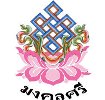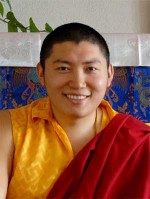HH. Phakchok Rinpoche message in January 2011
Dear Friends,
I hope you’ve all been happy and healthy. This being the first Guru Rinpoche Day message of the year 2011, and to start off the year auspiciously, I would like to share with you the Five Unshakeable Fortresses that is key for all dharma practitioners.
The Five Unshakeable Fortresses:
The five fortresses are extremely important for all dharma practitioners. If you don’t have these five, then actually it means that you are not doing quite so well…
1. Gaining Certainty in the View
Many of us when practicing the dharma are so busy doing things, physically, in the dharma world. Such as offering butter lamps, doing circumambulations, reading many texts, doing a lot of different daily practices, and while doing so, our precious time runs out. Though the time is not wasted on doing something unnecessary, but while engaging in doing these “dharmic activity”, we sometimes loose the focus or the point of doing it all and therefore completely lack in gaining certainty in and reconfirming, the view.
The earlier masters all said this so many times. Tilopa said that when you’ve lost the correct view your practice is gone. You may be very devoted and have a lot of faith, but you’re not going to have a correct practice because you lack the correct view. So the first most important thing is having certainty in the view.
How to get that?
Reinvestigating your emotions, your ego, ‘I’, your judgmental mind.
Why does my judgmental mind work so well?
Because I’m not reconfirming my understanding of egolessness.
Why are my negative emotions working so well?
Because, I’m not reconfirming my understanding of egolessness.
Why am I so moody?
Because, you forgot to reconfirm egolessness, selflessness. Really.
Why can we not have compassion that is free from judgment?
Because we lack an understanding of egolessness.
Why can we not have trust in emptiness?
Because we cannot gain trust in egolessness. That’s why.
Why when you practice the deity, do you see the deity as truly existent?
Because you have no understanding of egolessness.
So whatever practice you do, spend at least some time to re-investigate your emotions, your ‘I’, your judgment, your ego, your clinging, your anxiety. That is gaining certainty in the view and that means you are making an unshakeable fortress of the view.
2. Being Undistracted in Meditation
We talk about meditation all the time. This meditation, that meditation. Shamatha, Vipashyana, Mahamudra, the Development Stage, Mind Training, the Middle Way, the Great Perfection! But whatever meditation you do, we talk about five stages: movement, attainment, familiarization, stability, and perfection. The first is like a waterfall, the second a river gorge, the third a calm river, the fourth an ocean without waves, and the fifth like an unshakeable mountain. These experiences are actually measurements.
Measurements of what? Measurements of distraction. Having the most distraction is the first experience, the waterfall, and having a little less distraction is the river gorge. Again, when you’re a little calmer and when the rough distractions are gone, but subtle distractions are still there, it is the calm river. If you have less subtle distraction, that’s the ocean without waves, and even less, the mountain. So when you do meditation, you should know that the unshakeable fortress of meditation is non-distraction.
3. Conduct
Dharma practitioners should have a good conduct. Conduct is very important and on a simple level, we can say not doing harmful things to oneself and others and doing things to benefit others and oneself. Basically not harming others physically, verbally, or mentally. Bottom line; always being mindful of your conduct.
In the Mirror of Mindfulness, my master, Nyoshul Khen Rinpoche said, “When you don’t have mindfulness, you are a shit pot. When you don’t have any mindfulness, you are a dead body.”
To clarify Rinpoche’s quote, no matter how much you clean yourself, with brushing or washing, if you are not mindful of your conduct, you are always carrying that shit around and therefore you are always going to smell of shit no matter what. It is all the works of this “deluded mind” that we grasp to “what is” to “what is not” and therefore see unclean as clean, to what is impermanent as permanent, to what is selfless as having self, and to pain as pleasure.
So how can we work with this delusion?
By practicing mindfulness.
How to practice mindfulness in conduct?
By reminding. Not watching, but reminding yourself in whatever you do, to not forget what the buddhadharma really is. When you walk around the Buddha’s stupa in Boudhanath, remind yourself that you are walking around it to tame your mind. Remind yourself, “I am studying for enlightenment, to tame my mind.” Whatever you do, you need to remember the main core of the Buddha’s teaching; that is real conduct, how to keep conduct well. So please take it to heart.
I remember our late principal, Khenpo Kunga Wangchuk constantly telling the graduating class, “If you cannot help the dharma, at least don’t harm the dharma. Keep that in mind. Don’t think that you are acting alone. Individually, you are a pillar of the dharma. Individually, you represent the dharma. And therefore individually, your conduct will have a consequence on the dharma.” So mindfulness in conduct is the key.
4. Clearing Away Obstacles
When you start practicing the dharma, you’re going to face obstacles. I asked Nyoshul Khen Rinpoche one day, “Rinpoche, why is it like this? Whenever I want to do some kind of practice, I have an obstacle. Whenever I don’t want to do practice, I have no obstacle. Why is it like this?” For example, whenever I start meditating, all my worries come up and whenever I meditate my answers to those worries also come. Whenever I start thinking, the answers don’t come!
When you have difficulties in meditation, what is the best way to remove them? You can check many Mahasiddhas’ methods, many different masters’ texts, but all the time they say the same thing. What? Devotion. All the time they say this, and we have difficulty with that. It’s difficult for us to practice devotion, but if you look in any text, by Tilopa, Maitripa and so on, they all say, “Visualize the guru above your head surrounded by the lineage masters, and supplicate to them, receive the four empowerments, and think that your obstacles have all been removed.” In all the meditation manuals it teaches the same thing. So devotion is key.
What is devotion like? It has three qualities: certainty in the dharma, pure perception, and remembering the kindness. Parents’ kindness is extremely important: your mother keeps you for nine months in her womb, gives birth to you, feeds and clothes you, and helps you grow up. Our parent’s kindness is very important. But who teaches you to be independent? Who teaches you to actually be free from your emotions and suffering? Who guides you towards the truth so that you can actually be free? It’s the guru. That is remembering the kindness. Then we also have certainty and pure perception. With these three qualities, you can develop devotion easily.
5. Enhancement
How to enhance or improve your practice? First of all, why actually can we not improve our practice that much? It is because we have so many things to hold on to, and to get hooked with. For someone like me, we have monasteries, monks, projects, and all the planning that goes along with it. For some practitioners, it’s deities and accumulating merit, and for some, families, cars, your favorite brand, etc. These days, I’ve started liking the brand Burberry. Before I didn’t even know what it was, but now I really like it, and it’s very expensive. I love Mont Blanc too. There’s nothing there actually, but I like it. When people look at you, if you’re wearing a Mont Blanc pen, you’re okay, but if you’re wearing a lousy pen then you are judged to be worth just that. So all the time, we are judging and being judged. And now you feel you need to keep up to that. You start holding onto things, getting attached, worrying, and that’s why our meditation practice cannot improve well.
That’s why many great masters of the past practiced pongdag. For example, I heard that when Dilgo Khyentse Rinpoche reached Bodhgaya in India, a long time ago, he decided to give everything up through pongdag. Pongdag literally means to give up or to abandon. Khenpo Ngakchung did this three times. I also heard a story about Trulshik Rinpoche. For old masters, old statues are extremely important for them. You can give them a kilo of gold and they don’t care at all, but they really treasure their old statues. When Trulshik Rinpoche was receiving empowerments from Dilgo Khyentse Rinpoche, he cleaned out his entire altar by offering all of his precious statues to him.
In the past, I would count everyday how many things I owned, how many things I had to give up. I would count each thing on my fingers. We need to learn how to do this, how to practice pongdag mentally, to give up everything, and offer it as a mandala offering.
Many masters say that when you go to retreat, you need to cut your worldly perceptions and then your practice will improve very fast, but if you bring worldly concerns with you then your practice won’t improve as much. So I try to tell myself everyday when doing meditation, first of all, to give up my projects, my house, everything. This is what I do first for five minutes. After that I give rise to devotion and supplicate and then I meditate. If you do that, your meditation will improve so fast that you will be amazed.
So these are called the five unchanging fortresses of the dharma practitioner.
Certainty in the view
Non-distraction in meditation
Mindfulness in conduct
Dispelling obstacles with devotion
Enhancing through pongdag
Don’t forget these five, and try to improve them. When you can improve these five things in yourself, your practice is going to improve. You can check a hundred texts, meet a thousand masters, but they are not going to say anything more than this. When practicing, too much information isn’t that helpful, but one pithy piece of advice, a key, can help us change a lot!
Sarva Mangalam,
Phakchok Rinpoche

 Greetings Everyone,
Greetings Everyone,